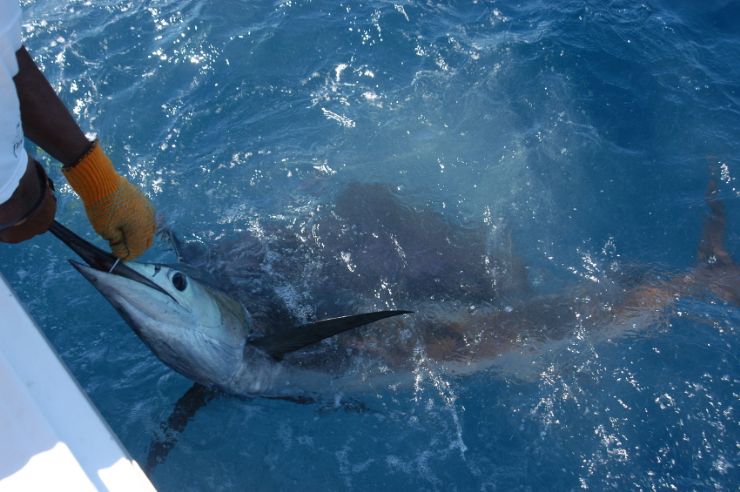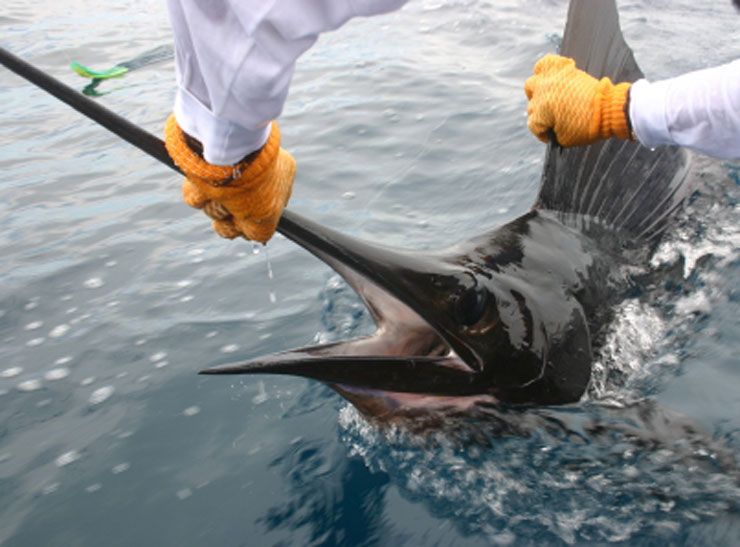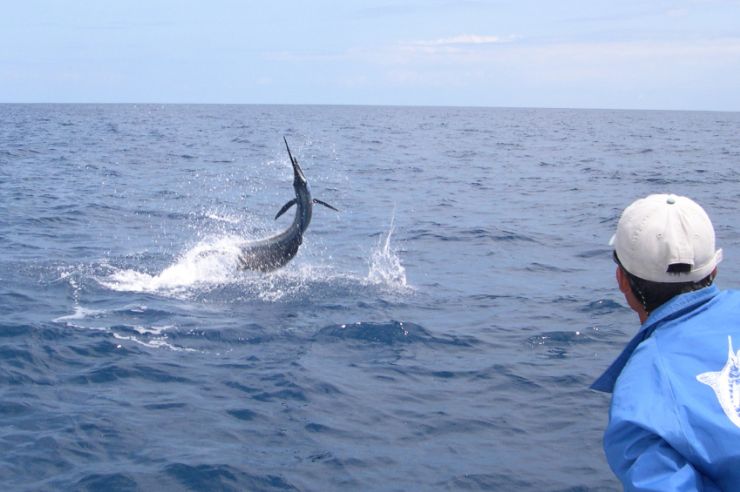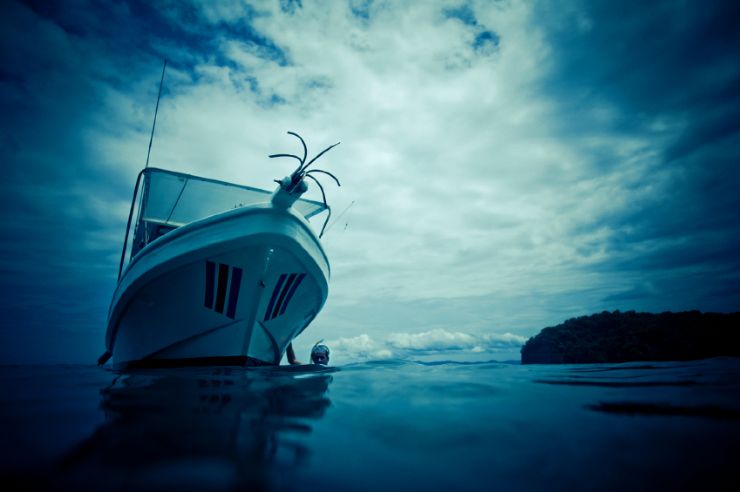
Catch & Release with a Marlin off of Quepos
No matter what time of the year you are traveling to Costa Rica, the temperate climate usually hovers around 70 to 85 degrees. I know some of my brothers and sisters would like it to be hotter, but these temperatures are just perfect for me! They also make it perfect for any traveler looking to take advantage of the high seas that lap at our coastline, where you can catch a glimpse of native wildlife like dolphins and whales. One of the most popular ways to spend an afternoon on the crystal clear waters is to go sport fishing. There's nothing better than cruising in the warm breeze to spend a day with a pole in hand, right? Not that they make any poles in my size, but it sure seems like it! Depending on the location you are traveling to, you might catch Marlin, Sailfish, Tuna, Tarpon, Rooster Fish, Rainbow Bass and much more. Although it is very popular in Costa Rica, strict catch-and-release laws make sure that everyone can enjoy the outstanding wildlife and exciting sport of game fishing.

Catch & Release with a Sailfish off of Quepos
Where to Go
The province of Limon is home to some of the best deep sea sport fishing in the country. Home to long strips of unabridged white-sand beaches, lush rainforests and dense wetlands, much of Limon is protected as wildlife areas. However, sport fishing remains one of the top reasons why travelers come to the area. You should head just north of Limon to Tortuguero National Park, which is considered to be home to some of the most excellent sport fishing on the Caribbean coast.
If you're a novice looking for a more low-key sportfishing experience, spending the afternoon in one of the country's freshwater rivers may be better suited for you. Inland fishing is popular in Laguna de Arenal next to Arenal Volcano, where rainbow bass is plentiful. Seamounts that rise hundreds of feet above the ocean floor where created by volcanic activity in this region, which has turned this area into a breeding and feeding ground for bait fish that attract larger fish.
More experienced fishermen may like to try tropical sportfishing in the Quepos on the Central Pacific coast. No matter what time of the year you travel to this region, Dorado, tuna, tarpon, marlin, or rooster fish are all plentiful! I'm not promising you'll catch one, though! For your best chances, visit Costa Rica during February.

Pacific Sailfish on line off of Los Sueños Marina
Particular Fish Hangouts
Looking to catch a marlin? Although Costa Rica has a great fishing, not all fish go for the same bait, so tailoring your fishing tactics (and fishing location) is key for catching that dream mackerel, snapper or marlin.
Mackerel, Snapper and Rainbow Bass have the biggest populations in Costa Rica and are abundant during the entire year. If you are hoping to snag a Rainbow Bass, you'll have to travel to Cano Negro or Lake Arenal in the north central region of the country. Snapper and Mackerel are a little easier to find because both are prominent in the Pacific Ocean. Mackerel are also commonly caught on the Caribbean side.
7 Days / 6 Nights
Starting at $779 per person
Blue Marlin, or the lady in the blue dress, is the most common fish in the waters of Costa Rica throughout the year. Famous for their long, rigid dorsal fin, Blue Marlin are most easily caught during the peak months of November and December, and then again in March and April. However, if you want to catch a Black Marlin, head out during the months of July and August.
Yellowfin Tuna is the most populous species, and these bad boys can weigh anywhere between 100 and 300 pounds! If you happen to stumble upon a school of porpoises in the water, you may be in luck because Tuna are known to swim nearby. Both of these species sometimes travel together and feed on the same bait, so keep an eye out especially during July, August, November and December. Always keep a keen eye out when you are looking for Tuna, as these legends of the deep are sometimes found near floating debris. Before heading out on the boat, you can check out logs of recent fishing locations and counts and check the weather and surface temperature of the water. If you are heading out with a professional, chances are they have already done their homework, but you can feel like a pro with the knowledge you've gained!
Travelers can head to the No. 1 rated inshore fishing area of Crocodile Bay, and they will almost surely catch a roosterfish. Roosterfish are the most commonly sought after species in the area, and the abundance of them makes them a somewhat easy catch. Some expert fishermen have recorded more than 50 catches of 15 to 20 pound fish in a week! Roosterfish are common year-round in the South Pacific of Costa Rica, but can also be caught in Guanacaste between the months of November and March. Travelers can head to Jaco or Manuel Antonio between June and October for a shot at catching a Roosterfish.

Sportfishing boat off the coast of Playa Hermosa in Guanacaste

